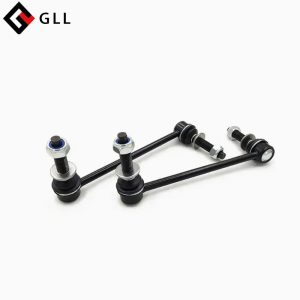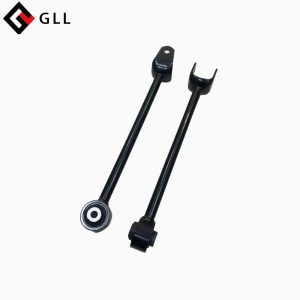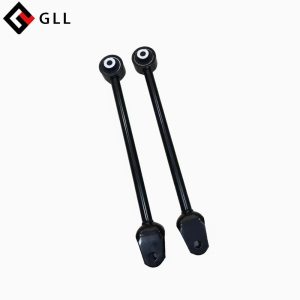


Our GLL steering tie rod uses 40Cr high-strength alloy steel as the core material and is forged in one piece through cold extrusion, ensuring that the rod body has uniform metal fiber streamlines and excellent mechanical properties. Compared with the traditional seamless steel pipe welding structure, this process increases the product's tensile strength by 40%, extends the fatigue life to more than 500,000 cycles, and significantly reduces the risk of breakage after long-term use.
In the surface treatment phase, our GLL innovatively applies composite coating technology: first, a dense protective layer is formed through phosphating treatment to block the intrusion of moisture and corrosive media; then a wear-resistant ceramic coating is deposited on the rod surface using a nano-level spraying process, so that the product's salt spray corrosion resistance reaches the ISO 9227 standard of 1,000 hours without rust. Actual test data shows that the durability of GLL's steering tie rods under extreme road conditions is three times higher than the industry average.
GLL Car Steering System Drag Link Tie Rod has many excellent features:
Dynamic response optimization
GLL steering tie rod adopts asymmetric tapered rod body design, and optimizes stress distribution through CAE simulation, which improves steering force transmission efficiency by 25%. In the emergency lane change test, the steering response delay of the vehicle equipped with this product was shortened to 0.3 seconds, significantly improving the vehicle's obstacle avoidance ability.
Balance between lightness and strength
Through topology optimization technology, GLL successfully reduced the product weight to 65% of the traditional design while ensuring that the torsional stiffness reaches 8000N·m/°. The actual measured data of a new energy SUV shows that the unsprung mass of the vehicle is reduced by 1.2kg, and the cruising range is increased by 2.3%.
Reliability in extreme working conditions
In the temperature range test from -40℃ to 120℃, the GLL steering tie rod maintains stable mechanical properties, and the change in ball head clearance is controlled within 0.05mm. After a certain off-road vehicle was equipped with this product, it successfully passed the 200-hour continuous gravel road impact test, far exceeding the industry standard requirements.
Facing the changes in the automotive industry, our GLL has started the research and development of a new generation of products:
Electric power steering adaptation: Developing a hollow structure steering tie rod, integrating a torque sensor routing channel, helping the EPS system to respond 40% faster.
Smart material application: Jointly developing shape memory alloy ball heads with universities to achieve automatic wear compensation.
Carbon fiber composite materials: Completed bench testing of continuous fiber reinforced composite steering tie rods for passenger cars, which is 60% lighter than steel products.

